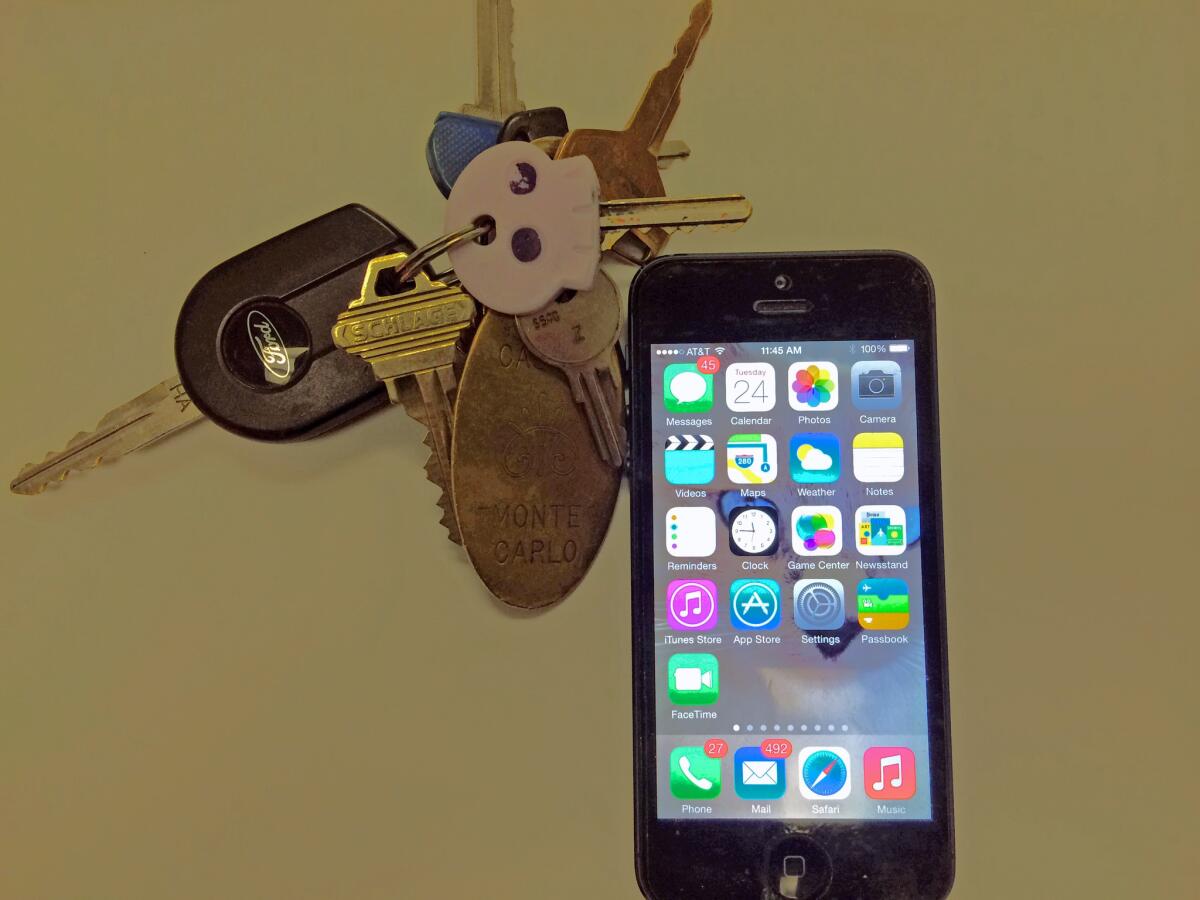How to unlock your iPhone -- and why you’d want to

Oh, the things we learn by experience. Unlocking a phone -- in this case, an iPhone -- is not as easy or as fast as you might think.
Which poses this question: What does unlocking a phone mean? Why would you want an unlocked phone? Sounds unsafe.
It’s not. An unlocked phone simply means you are no longer tethered to your service provider; you can go with whatever provider you wish.
That’s important for international travelers who don’t have (or don’t want) an international calling plan. I don’t travel enough internationally to make it worth my while.
The simple solution (or so I thought): Unlock the phone so you can swap out the SIM card, the little card that provides your service. You see SIM card sellers all over in foreign destinations, especially in airports. For instance, when I landed in Sydney, Australia, in March, I was able to get a SIM card while I waited for my ride into the city.
The SIM card I got wasn’t for my iPhone 5; I had an old iPhone 4S with me and that’s what I used. That’s because my AT&T contract for my iPhone5 wasn’t up, and I would have had to pay off my phone to untether it from AT&T.
When I checked again, I still owed quite a bit of money on that phone, whose cost is spread out over the length of your contract. (You can avoid that by paying for it upfront.) Not worth it, I thought.
Recently, I asked again. The price of freedom: $115. Bingo.
That’s when the service rep explained that I would have to be OKd to do this. Once I paid the $115 and was approved, I could begin the unlock process.
The approval email arrived soon thereafter. “We have reviewed your request and confirmed that the device may be unlocked,” it said. “You should complete the unlock process before porting out your number for use with another carrier. Please allow 24 hours upon receipt of this notification to complete the unlock process.”
OK, so how hard can this unlock process be?
Like everything that has to do with smartphones, it’s not difficult, but it is slightly more complicated than putting your key in the lock of your front door and opening it.
Here were the instructions in the email:
1. Open iTunes on your Mac or PC and verify that you have Internet connectivity.
OK, that worked.
2. Ensure the original SIM card that came with this device is inserted in your iPhone.
Yes, I had never removed it.
3. Connect your iPhone using the dock connector to USB cable that came with your iPhone.
I’ve done that before so not a problem.
4. Backup and restore your iPhone using iTunes.
This is what slowed me down. If you’re going to do this, set aside a block of time when you don’t need to use your phone or attend to other business.
First, I backed up my phone to iCloud. A message flashed that said my iCloud needed to be repaired and that I should go into the PC’s control panel, find Programs, find iCloud and click to “uninstall or repair” and then click repair.
Once that was fixed, I decided also to back up my phone to my PC.
Then I held my breath and hit restore on iTunes.
No dice. I had to turn off “Find my iPhone” in iCloud. (It’s under Settings.)
Done.
I hit restore again. At first it said it would take four hours. Then that decreased to a manageable 47 minutes.
After about 20 minutes, it said the equivalent of “Oops, try again - somehow your phone isn’t plugged into your PC anymore.”
Must have happened when I exhaled.
I held my breath again. I had been at this since 6:30 a.m., and it had taken more than two hours, all the while holding my breath. I was getting a little blue in the face.
Finally, I got the message that my phone was now unlocked. Then it restored all the stuff I had backed up, including apps.
After re-inputting my passcode, I went back into settings and turned on “Find my iPhone.”
I’m sure I did not execute this in the most efficient way possible. With me and any technology, that’s a given. But at least it’s done.
Now on my next international trip, I can swap out my SIM card. (Generally on an iPhone 5, on the right side of the phone, you’ll see a little hole. Take a paper clip and poke that -- a little tray will slide out and there is your SIM card.) No more carrying five phones. I’ll be back to a manageable two phones: my iPhone and the phone I carry for work.
Look out, world.
More to Read
Sign up for The Wild
We’ll help you find the best places to hike, bike and run, as well as the perfect silent spots for meditation and yoga.
You may occasionally receive promotional content from the Los Angeles Times.





